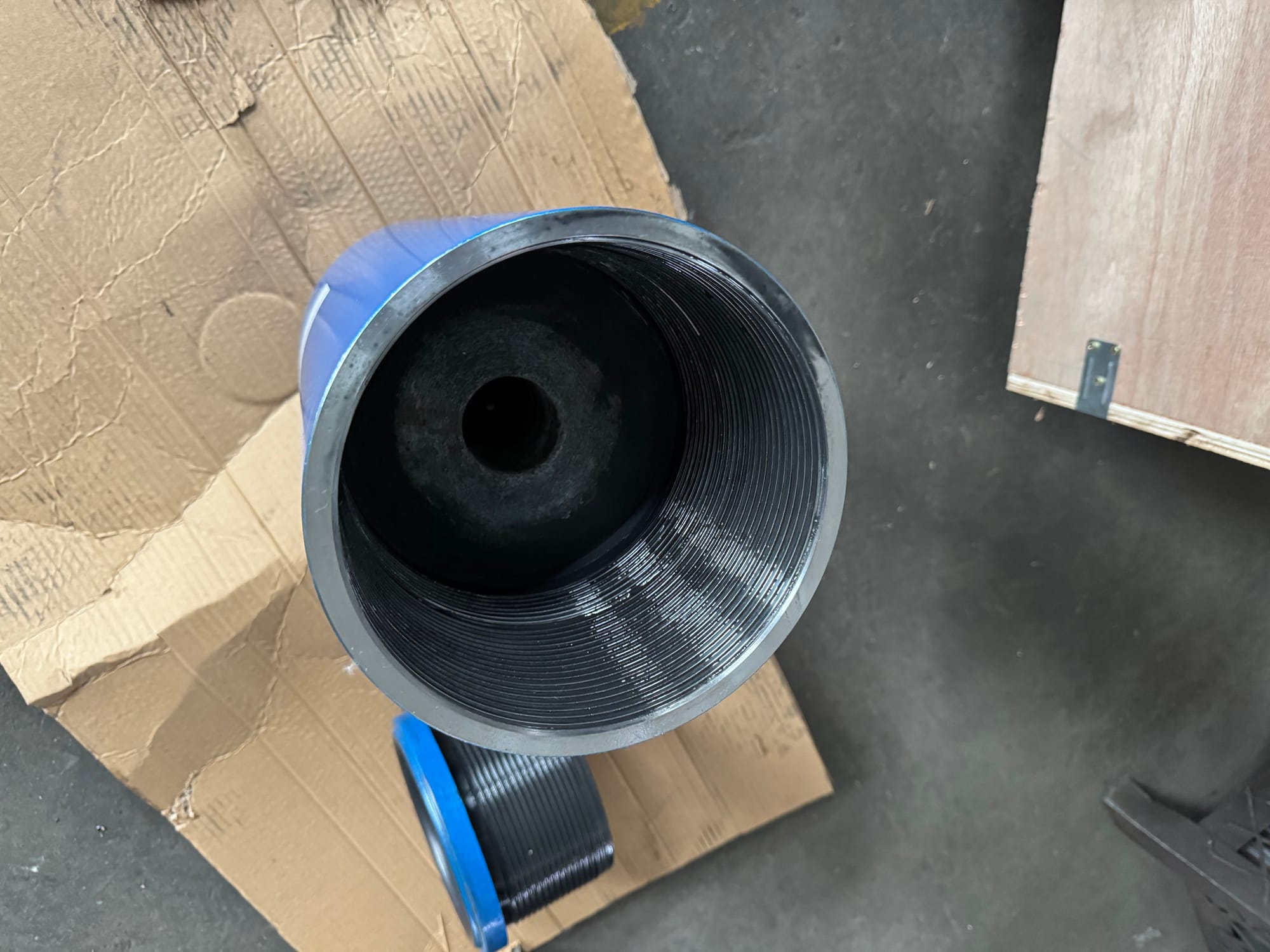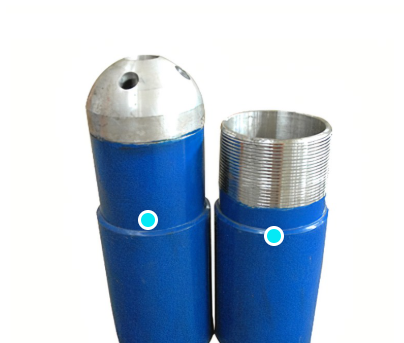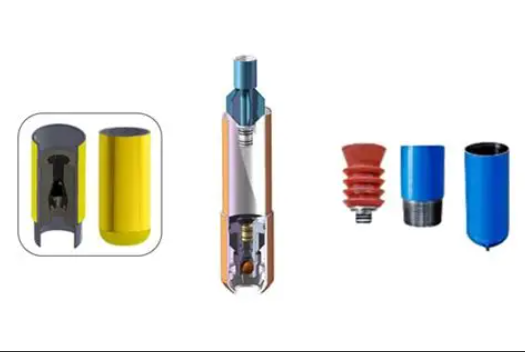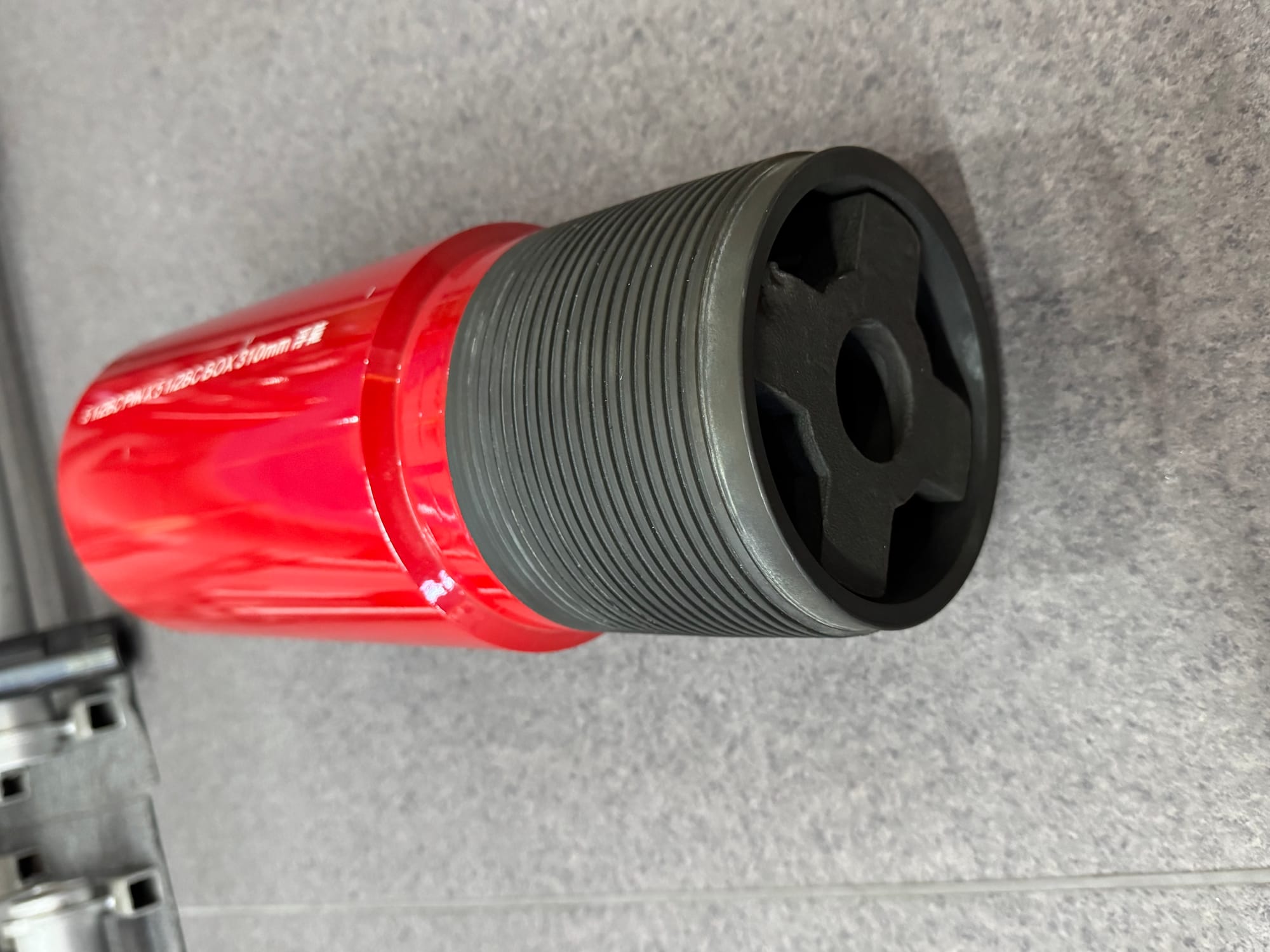5½Float Collar
Float Collar Position: Installed one to three joints above the float shoe. Design: Looks like a standard section of casing and does not have a guiding profile. Function: Its primary purpose is to serve as the primary stopping point for the cementing plugs and as a redundant backflow preventer. It contains a one-way valve and a landing seat. During cementing, the bottom plug will land in the float collar, after which pressure is increased to rupture the plug's diaphragm and allow cement to flow through. After displacement, the valve prevents backflow. In simple terms: Float Collar = One-Way Valve + Plug Landing Seat
$122.00
- Brand: Sunjoy
- SKU: 89
- Shipping:
- Return Policy: <div class="return-policy"> <h2>No-Risk Return Policy</h2> <p>Not 100% satisfied? We make returns easy.</p> <div class="highlight-box"> <h3>🔄 30-Day Returns</h3> <p>Return any item in original condition within 30 days for a full refund.</p> </div> <h3>📦 How to Return:</h3> <ol> <li><strong>Contact us</strong> at returns@yourstore.com with your order number</li> <li><strong>Get approval</strong> + return shipping label (if applicable)</li> <li><strong>Ship back</strong> via prepaid method</li> </ol> <h3>❗ Important Notes:</h3> <ul> <li>Refunds exclude original shipping fees</li> <li>Customs duties on international returns are non-refundable</li> <li>Final sale items marked "Non-returnable" are excluded</li> </ul> <p>🔔 <em>Need help? Chat live with our support team → [右下角聊天图标]</em></p> </div>
Learn More
Float Collar
1. Definition
A float collar is a critical downhole tool installed in the lower section of a casing string (typically 1–3 joints above the float shoe) in oil and gas drilling. It integrates a casing collar body with a one-way check valve, combining the functions of backflow prevention, casing string support, and cementing quality control. Unlike the float shoe (which has a rounded guiding nose), the float collar has a cylindrical collar structure that aligns with standard casing joints.
2. Core Applications
The float collar works in tandem with the float shoe to optimize casing running and cementing operations, with the following key uses:
- Dual Backflow Prevention: As a "secondary safety barrier" to the float shoe, its built-in check valve blocks reverse flow of drilling fluid, cement slurry, or formation fluids into the casing. This is critical for preventing the "U-tube effect" (fluid reversal due to pressure differentials) and protecting the casing from internal contamination.
- Casing String Support: During casing running, the float collar bears the weight of the upper casing string when the string is temporarily set down (e.g., during tripping adjustments). It prevents direct contact between the casing and the wellbore bottom, avoiding casing deformation or stuck pipe.
- Cementing Efficiency Enhancement: It acts as a "baffle" to stabilize fluid flow during cement slurry displacement. By reducing turbulence at the casing bottom, it ensures uniform distribution of cement around the casing annulus, improving the bond between casing and formation and minimizing annular gas migration.
- Casing Positioning Assistance: In deviated or horizontal wells, it helps maintain the casing string’s centralization, ensuring the float shoe stays aligned with the wellbore path for smoother running.



3. Model Classification
Float collar models are primarily classified based on casing compatibility, pressure/temperature ratings, connection type, and check valve design, with specifications aligned to API (American Petroleum Institute) standards. The following table outlines common classification criteria:
| Classification Criterion | Typical Specifications |
|---|---|
| Casing Size (OD) | 4-1/2", 5-1/2", 7", 9-5/8", 13-3/8", 18-5/8" (matches casing outer diameter) |
| Pressure Rating | 3000 psi, 5000 psi, 10000 psi, 15000 psi, 20000 psi |
| Temperature Rating | Standard (≤150°C), HPHT (150°C–200°C) |
| Connection Type | API Threaded (BTC, LTC, STC), Welded, Integral |
| Check Valve Type | Flapper Valve, Ball Valve, Poppet Valve |
| Application Scenario | - Conventional Wells: Standard pressure/temperature - HPHT Wells: High-strength alloy, heat-resistant seals - Horizontal/Deviated Wells: Wear-resistant valve seats, anti-rotation design |
4. Typical Model Examples & Coding Interpretation
Manufacturers use standardized alphanumeric codes to denote float collar specifications. Below are illustrative examples and their breakdowns:
Example 1: FSG-7-5K-LTC-F
- FSG: Abbreviation for "Float Collar" (some manufacturers use "FC")
- 7": Matches 7" casing size
- 5K: Pressure rating (5000 psi)
- LTC: Connection type (API Long Thread Connection)
- F: Check valve type (Flapper Valve)
Example 2: HPHT-FC-9-5/8-15K-BTC-B
- HPHT: Designed for High-Pressure High-Temperature wells
- FC: Abbreviation for "Float Collar"
- 9-5/8": Matches 9-5/8" casing size
- 15K: Pressure rating (15000 psi)
- BTC: Connection type (API Buttress Thread Connection)
- B: Check valve type (Ball Valve)

5. Key Technical Parameters
| Parameter Category | Typical Range | Description |
|---|---|---|
| Maximum Working Pressure | 3000–20000 psi | HPHT models support up to 20000 psi for high-pressure formations. |
| Maximum Working Temperature | -20°C–200°C | Standard models: ≤150°C; HPHT models: 150°C–200°C (with heat-resistant elastomers). |
| Body Material | AISI 4130, AISI 4140, Inconel (HPHT) | Alloy steel for corrosion/wear resistance; Inconel for extreme HPHT conditions. |
| Check Valve Material | Nitrided Steel, Tungsten Carbide | Hardened materials prevent valve seat wear during fluid flow. |
| Connection Thread | API STC/LTC/BTC | Matches casing thread standards for secure connection. |
| Inner Diameter (ID) | Slightly less than casing ID | Ensures unobstructed fluid flow while housing the check valve. |